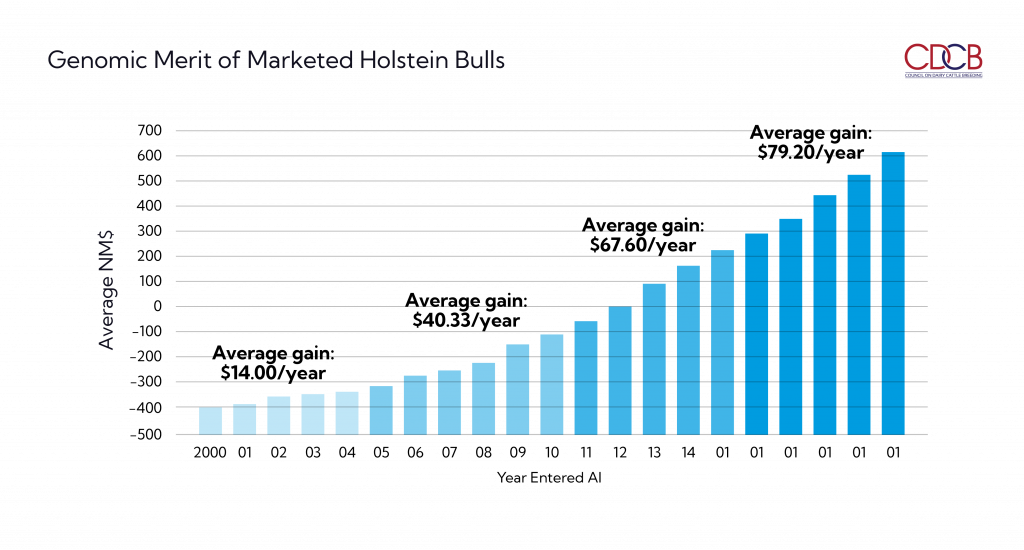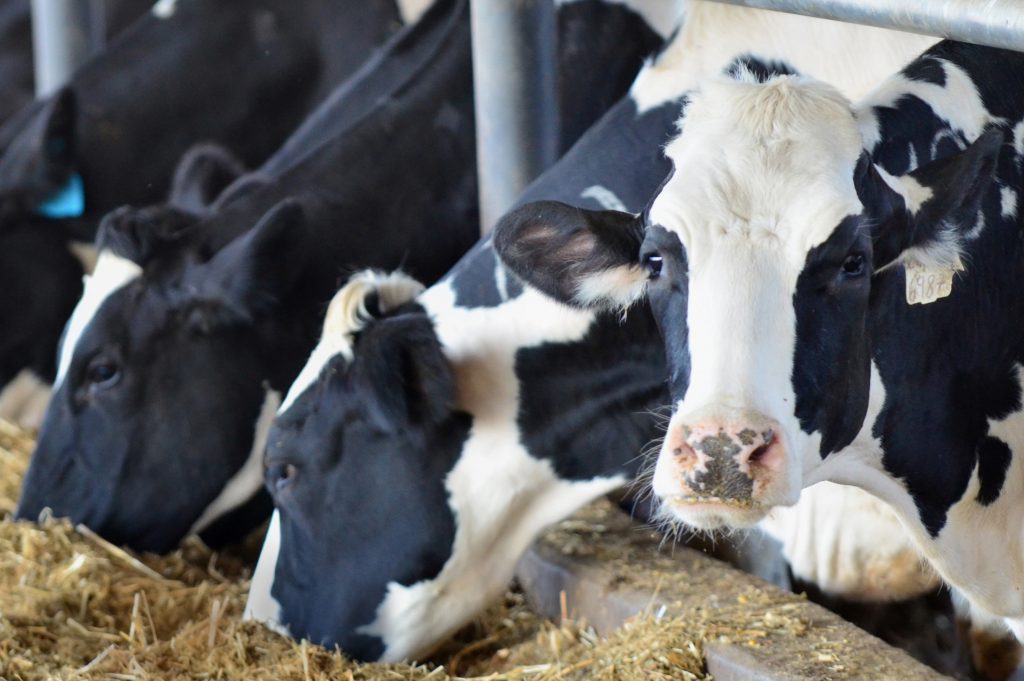Impact of Genomics
Genomic selection has revolutionized dairy cattle breeding – transforming dairy genetics more than any other innovation since artificial insemination in the 1930s.
Benefits of Genomics
Since 2009, dairy producers worldwide have been able to use high-ranking U.S. genomic sires. U.S. producers quickly embraced the genetic potential of these younger sires. In 2021, 71% of the A.I. breedings in U.S. dairy herds were to sires with no milking progeny. Genomic testing has also become an important herd management tool for mating, culling and selection decisions. One million animal genotypes are submitted annually to CDCB – with more than 90% of those being females.
Genomics deliver these benefits for dairy producers worldwide.
- Greater genetic gain
- Animals’ genetic merit determined at young age
- More reliable prediction of genetic merit than pedigree alone
- Access to more A.I. sires of higher genetic levels
- Identification of genetic conditions
- Expedites development of new, economically-important traits
U.S. Dairy Leadership
U.S. dairy has provided an ideal environment for genomic selection – with a robust foundation of performance data, quality data collection and traditional evaluations, federal research support, investments by breeding organizations, creation of genotype technologies, and producers that were excited to innovate. Geneticists at the U.S. Department of Agriculture developed innovative methodologies that are now foundational and adopted in many other countries.
Double the Genetic Gain
Genomic selection in U.S. Holsteins has doubled the annual rates of genetic gain for production traits. For fitness traits, like fertility, udder health and productive life, the genetic gain has proven even higher.
The higher rate of genetic gain is shown when comparing the genetic merit of Holstein sires marketed before and after the start of genomic evaluations in 2009. In 2005 to 2010, the average gain in Net Merit $ was $40.33 per year. That annual gain doubled to $79.20 per year from 2016 to 2020, as the benefits of genomic selection were realized.
This genetic gain is due to increased selection accuracy, increased selection intensity, and the shortened generation interval.

New Trait Development
Many traits important for animal health and herd profitability are difficult and expensive to measure. With genomics, phenotypes can be collected on a small, strategically-chosen group of genotyped animals. Marker effects can be calculated based on the reference population and used to predict genomic breeding values for all animals that have been genotyped. Genomics have enabled CDCB to develop and launch 11 economically-important traits since 2018 – such as disease resistance and feed efficiency.

Parentage Verification
For every genotyped animal, CDCB can verify, correct or complete the animal’s pedigree information, which results in more accurate genetic evaluations and control of inbreeding.
Identification of Genetic Conditions
Haplotype tests are now routinely conducted to identify new recessive disorders and track the carrier status of genotyped animals. These haplotypes are used to trace genes or genetic variants that cause the expression of a particular phenotype. While some genetic variants are desirable, like polled, others can be detrimental or even lethal.
Haplotypes that affect fertility also are used to reduce matings that result in abortions, embryonic losses and other recessive defects.
Genetic Change: Driven by Four Factors
Genomic selection has resulted in a shortened generation interval, increased selection accuracy, and increased selection intensity for males and females as parents of the next generation.
Accuracy of selection = Precision, or reliability, with which genetic merit is estimated
Genomic evaluations are considerably more reliable than Parent Average
Selection Intensity = Level of superiority of parents of the next generation
More males and females can be screened efficiently through genotyping to identify elite animals
Genetic Variation = Relative differences among animal as controlled by genetic factors
Generation Interval = Average age of parents when their offspring are born
Genomic-tested young sires are available for A.I. at 1 year of age vs. 4 to 5 years for progeny-tested bulls
Milestones in Genomic Selection
U.S. dairy been a global leader in the research and development of genomic evaluations and applications.